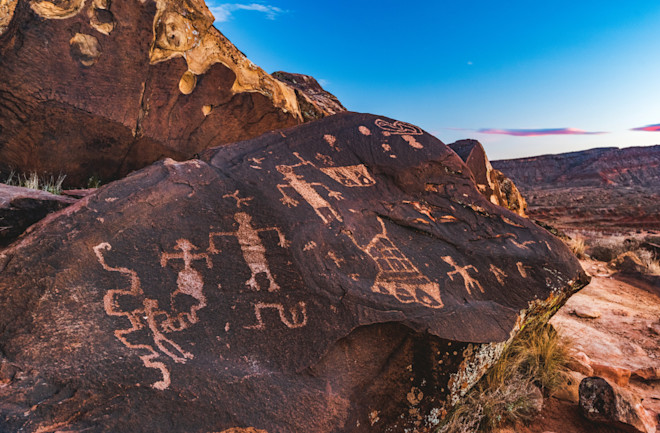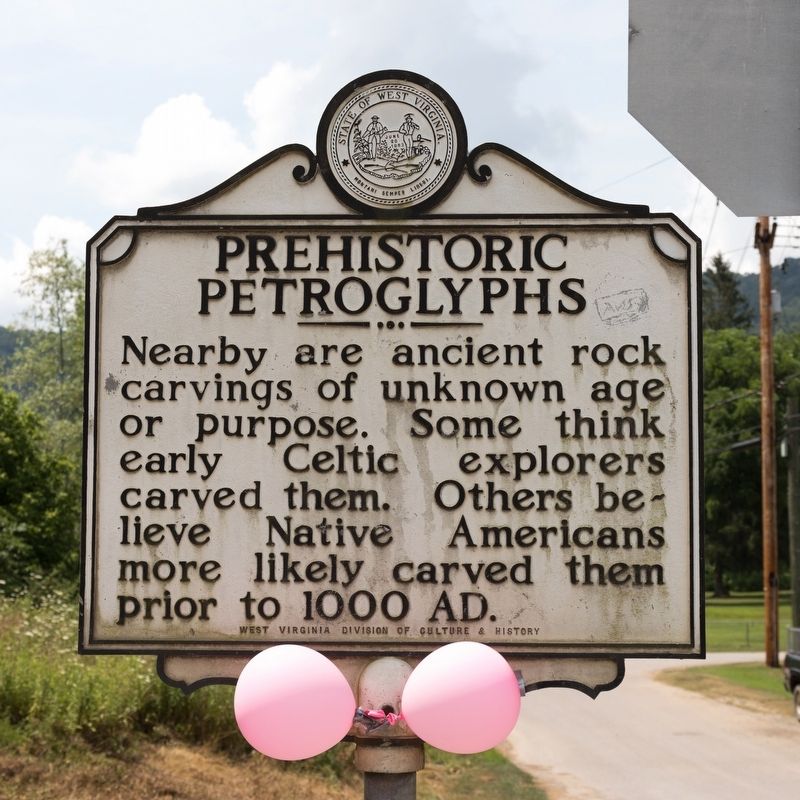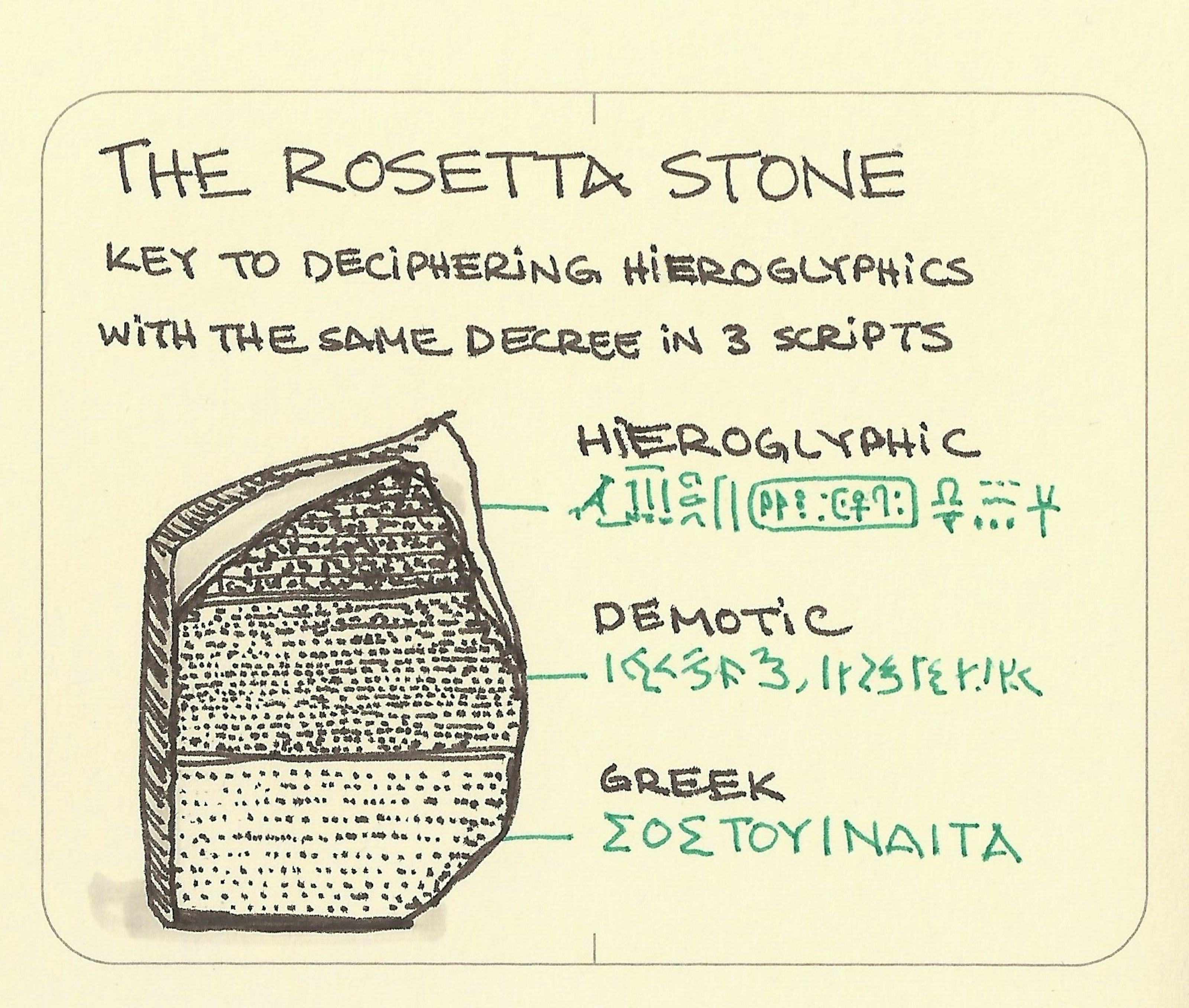Blog #4 EOTO: In Case You Have Been Living Under A Rock...
Petroglyphs & Hieroglyphs
What is Communication?
Communication: "the process of exchanging words, signs, or information with others. It is done either verbally or non-verbally."
Below is my reflection on non-verbal communication methods that eventually evolved into forms of verbal communication. Petroglyphs & Hieroglyphs are like the founding fathers of the constitution. They created iconic ways to communicate that evolved into the technology we have today.
The Evolution of Traditional to New Media
This video is a perfect for any age and I'm sure it will teach you something. I was born in 1999, so I grew up with a lot of new technology being developed and sold. My parents and grandparents grew up in earlier generations. They had earlier forms of technology that set the bar for modern day technology.
Most people don't know the origins of communication or how long ago it began and especially how far it has evolved with technological advancements. We tend to neglect things we didn't grow up with or use on a daily basis, but there is always time to learn!
Petroglyphs:
"Remember that language is about interpreting. Nothing is set in stone.... unless you're interpreting petroglyphs"
- Unknown
The History of Petroglyphs:
Ancient Native Americans are a few of the earliest creators of petroglyphs. These rocks bare carvings dating back to possibly 10,000-15,000 years ago. One was found in Nevada (The Rock). Petroglyphs were and still are incredibly valuable to the illustrators and artists because it’s an outlet for communication and personal. Petroglyphs have various alternative methods of uses, such as narrating stores and entrusting ancestors to share history of their people. I guess a comparison for this is Facebook. That’s honestly where most people share their family off.
Rock art is another nickname for petroglyphs and “rock art is a manifestation of the human impulse to communicate.” Petroglyphs were the only type of written communication. There were no pens or pencils or paper, only what they could find off the land. Their history covers cave and rock walls displaying stories of their culture. For us, we have iCloud. Rocks would evolve to canvas, berries used for color evolve into paint colors that we have today. Petroglyphs will always keep their originality and historical structure but act as a major influence and tipping point for technology to enter the picture.
Below is an excerpt with a bittersweet outcome. Although negativity was the driving force for the creation of the Cherokee language, it was a positive evolution of prior ways to communicate.

The Egyptian Writing System used hieroglyphs, they turned symbols to words. Petroglyphs used carved images as their way of communication. Egyptians used symbols as their alphabet. The symbols were equivalent to words and that became the next form of communication that branched off petroglyphs.

The Rosetta Stone was created to honor king Ptolemy V for all he had done for Egypt and his officials. The decree was transferred to the rock and copied in three different languages. When archeologists found it, they had no clue where to start. Hieroglyphics were always a locked door, everyone wanted in, but no one could find the key.
The decree is inscribed three times: the key to understanding Hieroglyphics:
The Impact of Petroglyphs:
Petroglyphs have a rich history held near and dear to past, present and future ancestors. After all, petroglyphs were “an early attempt by civilized cultures to develop a written form of communication.” This form of communication was a catalyst to future inventors that created the modern communication technology that we use daily.
These forms of storytelling and announcements created a way for separate groups to communicate and leave trails for others to find. It was like a giant bulletin board where people stick their information that they want to be passed around. We do this with pen-pals or neighbors. Sometimes our modern version of this is posting a comment on someones photo or post on social media.
Petroglyphs are most likely the early ancestors to hieroglyphs. These pictures and carvings into rock were just the beginning of what would become today’s writing on paper or drawing pictures. The more I learned, the more questions I had: What would have happened if petroglyphs weren't preserved or ever created? Would we have the same type of technology as we do today? Would Egyptians have a different system of writing? Would we speak a different language or use a different alphabet? I guess I’ll never know and honestly I’m okay with that!
How the Cherokee Language Was Born:
"Sequoyah was one of the most influential figures in Cherokee history. He created the Cherokee Syllabary, a written form of the Cherokee language. The syllabary allowed literacy and printing to flourish in the Cherokee Nation in the early 19th century and remains in use today." - National Geographic Society
Sometimes I think of negative situations or problems like this: a battery has two sides; one side is negative, and the other side is positive. Just because there is a negative doesn’t mean there can’t be a positive too.
Petroglyphs vs. Hieroglyphs:
Hieroglyphs differentiate from Petroglyphs by their overall meaning and usage, for example:
Petroglyphs = Rock Carvings → Images Hieroglyphs = Symbols → Words
Hieroglyphs:
How Did Egyptians Utilize Hieroglyphs?

The Rosetta Stone:

The Rosetta stone was a mystery and stumped many who tried to crack the meaning behind the symbols. But only until Thomas Young (1773–1829), an English physicist, was one of the first to show that some of the hieroglyphs on the Rosetta Stone wrote the sounds of a royal name, that of Ptolemy.
In the modern world today, when we don't know something or a translation or even a word's definition...we Google it! The internet and google translate is a type of 21st century Rosetta Stone.






_Petroglyphs_Wadi_Methkandoush_Luca_Galuzzi_2007.jpg/655px-Libya_5321_Meercatze_(Gatti_Mammoni)_Petroglyphs_Wadi_Methkandoush_Luca_Galuzzi_2007.jpg)





Comments
Post a Comment